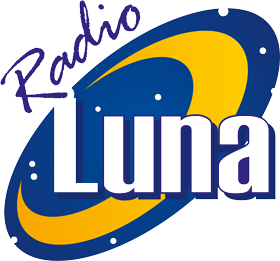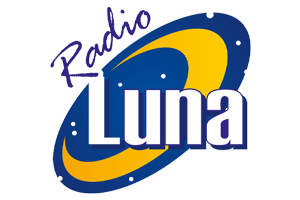Visit our dedicated hub for more research-backed information and resources on mental health and well-being. Symptoms of phencyclidine intoxication may last from several hours to as long as 48 hours. The duration of phencyclidine intoxication can vary based on the dose crystal meth: signs of use and addiction and the method of use. It binds to NMDA receptors, which decreases mood inhibitors called GABA receptors. It also blocks the uptake of the neurotransmitters serotonin, norepinephrine, and dopamine. Phencyclidine can be in crystal, powder, liquid, or tablet form.
How do doctors diagnose phencyclidine overdose?
For example, you must see doctors within the plan’s network to be covered—no flexibility. If you have a health plan, chances are you have a managed care plan. Some PCP users suffer frequent hallucination flashbacks and other mental disorders over a long period of time. Ultimately, the drug can cause a complete breakdown of a person’s life. Memory loss is common, and loss of concentration and a rejection of boundaries are almost normal with continued PCP abuse.
year-old L.A. twins die from fentanyl-laced drugs. Mother now charged with murder
- Swallowing the drug slows the absorption and results in the onset of effects being delayed until about 30 – 60 minutes.
- Our individualized treatment plan, programs, and therapies may be a perfect match for you or your loved one.
- For example, someone will think they can cross a street quickly enough to avoid traffic, only to be hit by a car.
- Many believe PCP to be one of the most dangerous drugs of abuse.
- PCP was first developed in 1956 by Parke Davis Laboratories of Detroit for use as an anesthetic in veterinary medicine, though it is no longer used in this capacity.
- PCP is well known for its primary action on the NMDA receptor, an ionotropic glutamate receptor.[49][44] As such, PCP is a noncompetitive NMDA receptor antagonist.
The brown coloration comes from the manufacturing process; it’s usually the result of unreacted chemicals, which can cause severe side effects. PCP dependence can be quite difficult to overcome, particularly because the long-term effects it causes commonly lead to relapse. Because of this, individuals suffering from PCP dependence are strongly encouraged to seek professional help.
Common Myths About Weight Loss Drugs Like Wegovy and Zepbound Debunked
Involving family and friends during counseling can help support you and keep you from going back to using (relapsing). This means it acts on your brain (central nervous system) and changes your mood, behavior, and the way you relate to the world around you. Scientists think it blocks the normal actions of certain brain chemicals.
Substance Abuse & Addiction Resource Center
The activated charcoal dose is 1 g/kg, with a maximum dose of 50 g. Most patients survive PCP intoxication with supportive care. Airway, breathing, circulation, and hemodynamic monitoring are essential to the care of patients with PCP toxicity. Intubation with ventilatory support may be required for airway protection. Aftercare or follow-up treatment is also vitally important to long-term recovery. If you or someone you know or love struggles with PCP addiction, contact Northridge Addiction Treatment Center.
What Else Is PCP Called?
These symptoms can continue long-term, often for up to one year after stopping phencyclidine use. Suicide after long-term use may be a greater risk, as well. The “high” effects of PCP occur quickly when smoked, typically within 2 to 5 minutes, and within one hour after oral use. When smoked, peak effects occur in 15 to 30 minutes, and within 2 to 5 hours with oral use.
Smoking is the most common route when used recreationally. The liquid form of PCP is actually PCP base often dissolved in ether, a highly flammable solvent. For smoking, PCP is typically sprayed onto leafy material such as mint, parsley, oregano, or marijuana. Justin’s foster mother said she had been trying to stop the supervised visits because she believed Darthard was drinking during them. Darthard told detectives she was homeless and only went to the house for visits with the kids.
The most common health plans available today often include features of managed care. These include provider networks, provider oversight, prescription drug tiers, and more. These are designed to manage costs for everyone without sacrificing quality care.
Lorazepam 2 to 4 mg intravenous (IV) or intramuscular (IM), or diazepam 5 to 10 mg IV or IM are recommended. Repeated doses every 10 minutes may be required for adequate sedation. Benzodiazepines are also the first-line treatment for PCP-induced hypertension and seizures. Hyperthermia from PCP toxicity is due to psychomotor agitation and can be successfully treated with benzodiazepines as well. PCP, also known as 1-(1-phenylcyclohexyl-piperidine), is a synthetic arycycloalkylamine created from piperidine and cyclohexanone. It has a volume distribution of 6.2 L/kg and a pH between 8.6 and 9.4.
Patients with rhabdomyolysis, hyperthermia,altered mental status, seizures, significantinjuries, or pediatric age requirehospitalization. Children require continuousmonitoring to note fluctuations in consciousness,cardiorespiratory stability, and for suction ofexcess oral secretions. Whatever your situation is, be sure to follow the treatment recommendations of professionals to help ensure that you receive the level of care that fits with your needs. There are a number of options that can benefit someone struggling with an addiction to PCP. Seeking professional advice is always the appropriate course of action if you, or someone you know, is negatively impacted by the abuse of PCP.
Phencyclidine (PCP) is a dissociative anesthetic that is a commonly used recreational drug. PCP is a crystalline powder that can be ingested orally, injected intravenously, inhaled, or smoked. After being discovered in 1926, PCP was developed mental health and substance abuse health coverage options as a general anesthetic in the 1950s because it could achieve analgesia and anesthesia with minimal cardiovascular and respiratory suppression. By 1967, it was discontinued due to postoperative dysphoria and hallucinations.
There are no specific approved drug treatments for phencyclidine addiction or withdrawal. It may interfere with several other substances and repeated use can cause tolerance and several long-term side effects. Furthermore, taking a large amount can lead to an overdose and could increase the risk of dangerous, aggressive, or violent behavior. Besides angel dust, other commonly used street names for the drug include ozone, rocket fuel, amp, animal tranquilizer, hog, shermans, wack, crystal, and embalming fluid. If it’s mixed with cannabis, you might hear it called killer joints, fry, lovelies, wets, or waters.
We are dedicated to transforming the despair of addiction into a purposeful life of confidence, self-respect and happiness. We want to give recovering addicts the tools to return to the outside world completely substance-free and successful. If you use angel dust (phencyclidine) regularly and suddenly stop, you may have withdrawal symptoms like headaches, profuse sweating, and drug cravings.
Addiction and related mental health problems make it hard to function socially, financially, and professionally. Poor judgment and reasoning skills, psychosis, paranoia, and self-injurious or violent action may occur in those already prone to these behaviors. The person may develop a type of psychosis similar to that seen in schizophrenia. Interrupting these receptors allows the brain to disconnect from normal sensory experiences, or “reality.” In higher doses, however, it may also excite these receptors. Phencyclidine, or PCP, also known as “angel dust,” is an illegal psychedelic drug that induces hallucinations and produces a feeling of detachment from oneself and one’s surroundings. Always consult your healthcare provider to ensure the information displayed on this page applies to your personal circumstances.
Once the withdrawal process is complete, addiction treatment therapy will start, either in an inpatient rehab center or as part of an outpatient treatment program. The effects of PCP abuse vary widely depending on the amount of the drug that has been ingested. It’s nearly always smoked, which makes dose management very hard. Hallucinations typically accompany PCP use, along with distortions of a person’s sense of time and being. With this loss of the self, the user may feel intense alienation—as though the world and the people in it make no sense—as well as feelings of depression. PCP is usually sold as a white powder, although colors can range from dark brown to white.
Perhaps deservedly so, PCP has developed a very negative reputation based on reports of what can happen to those under the influence of the drug. People are more likely to act aggressively or violently towards others or themselves. how long does weed stay in your system The incidence of such behaviors may be more common in people with a history of mental health issues. The short-term effects of PCP vary depending on the particular dose taken, as well as the route of administration used.
Though withdrawal from PCP is not life threatening, it may require treatment from a trained healthcare professional. According to the National Institute on Drug Abuse, repeated use can lead to tolerance and the development of a substance use disorder, including withdrawal symptoms when you stop taking it. Many believe PCP to be one of the most dangerous drugs of abuse. A moderate amount of PCP often causes users to feel detached, distant, and estranged from their surroundings. Phencyclidine (PCP) is a mind-altering drug that may lead to hallucinations (a profound distortion in a person’s perception of reality). It is considered a dissociative drug, leading to a distortion of sights, colors, sounds, self, and one’s environment.
The half-life is estimated to be 21 hours, but symptoms can last from several hours up to 48 hours, depending on the dose. Recurrent, fluctuating symptoms can occur because PCP is fat-soluble and can be released from lipid stores and adipose tissue that can occur days to months after the initial use. Also known as angel dust, killer weed and supergrass, among other slang terms, PCP is sold in a variety of forms including tablets, capsules and colored powders. It is most commonly sold as a powder or liquid and is applied to a leafy material such as mint, parsley, oregano, tobacco, or marijuana when used for smoking. A person’s outcome is more likely to be positive if they seek treatment from a team of healthcare professionals. Most people who experience phencyclidine intoxication survive when they receive supportive care.








